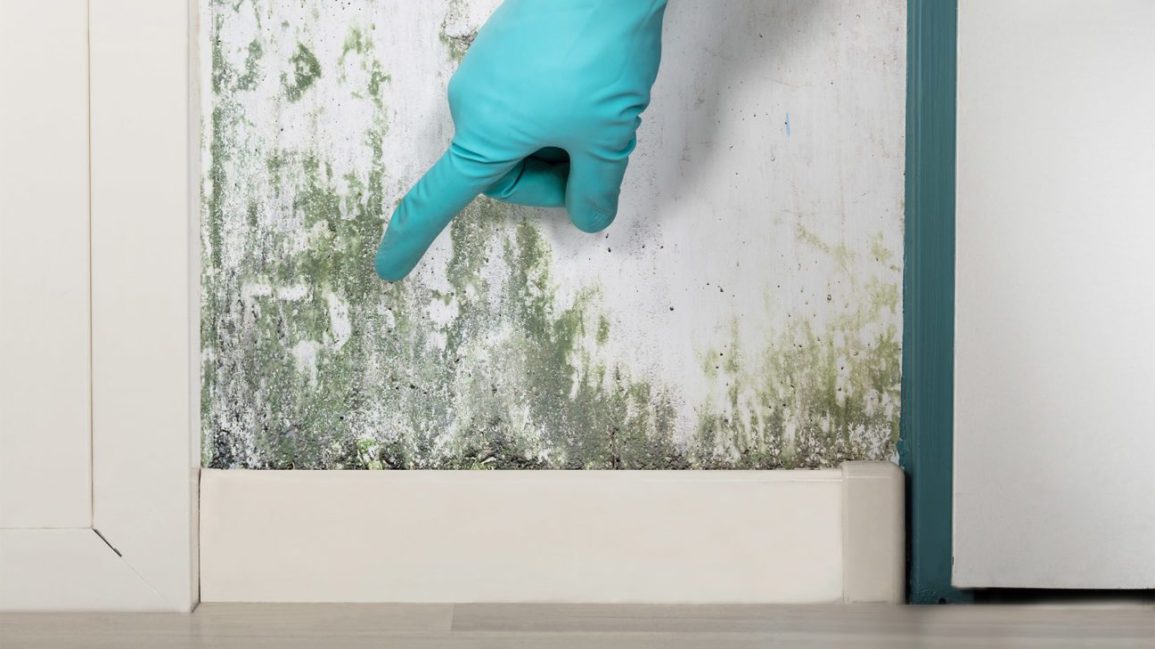For homeowners, a mold issue is certainly one of the last things you want to worry about. Since mold is equal parts dangerous and expensive, it’s important to address the problem as quickly as possible to prevent it from getting worse. In these cases, many people try to turn to DIY remediation techniques before seeking professional help. Two common tactics you’ll read about online are mixtures of bleach and peroxide to kill mold, but you should be cautious with both.
So can bleach or hydrogen peroxide kill mold? Is there another way to get rid of mold to keep me safe? No matter your problem, Carolina Inspection Associates is here to help. Based on our expert knowledge, we can tell you that bleach and peroxide may be able to combat mold spores, but they are not long-term remediation solutions for solving the problem. We’ll explain why below.
Bleach
If you read the label on your bleach bottle, you will probably see that it is only designated for non-porous surfaces. This means that chlorine bleach can only kill surface mold. Because mold can grow deep roots within porous surfaces, such as wood and drywall, bleach will not assist you in exterminating mold as it can only kill surface mold. As the chlorine cannot penetrate the spores to destroy growth at their roots, it remains on the surface while the water component of the bleach reaches further, which can actually feed the mold growth.
You may think you have completely eliminated the mold when, in fact, you haven’t, and it will likely come back worse than before. So, if you want to eliminate the mold from your home for good, bleach is probably not the answer.
Chlorine bleach products are also highly toxic when inhaled. They produce fumes that pollute the air and can become harmful to humans and pets, mainly due to a byproduct called dioxin, which is also linked to cancer. Over time, bleach builds up these pollutants in the environment. You obviously don’t want to create more toxic chemicals in your home, considering mold is toxic enough on its own. There are many safer alternatives that are also much more effective at getting rid of mold, and one of the best ones is to let the professionals handle it!
Hydrogen Peroxide
While hydrogen peroxide does not possess the same harmful health threats as bleach, it’s still not a totally viable solution to your mold problem. Solutions of hydrogen peroxide are not stable in sunlight, and if contaminated, the container will undergo rapid pressurization with the risk of bursting. So, packaging and storage are an issue.
In addition, hydrogen peroxide can damage certain surfaces in your home, like textiles and carpeting, and if contaminated, the container will undergo rapid pressurization with the risk of bursting. Peroxide is only stable under acidic conditions, and it can damage surfaces that are not acid-stable. Hydrogen peroxide also has no bacteriostatic or fungistatic capability and is susceptible to degradation if contaminated. Therefore, containers and any water diluent must be very clean.
How Exactly Can I Kill Mold?
Can bleach and peroxide kill mold? Although they can be dangerous, bleach and hydrogen peroxide kill mold if you use them correctly — and as long as you don’t rely on them as your only option. Many of the bleach and mold myths ignore the fact that the best way to clean moldy areas is to prevent it in the first place, but you don’t want to let mold linger in your home. Being mindful of the harmful effects these products can have, follow these steps to stay safe when cleaning mold.
- Before you begin cleaning, throw on gloves, goggles, and a mask to keep yourself away from the porous material. Be sure to change your clothes after cleaning.
- If your mold is on solid surfaces, 3% hydrogen peroxide in a spray bottle is a great option to fight it.
- Spray the mold until it completely blankets the mold. Wait 5-10 minutes, or until the peroxide stops fizzing.
- Remove the mold with a rag or brush, scrubbing away at the surface until all the mold is gone.
- Wipe the surface clean, and if necessary, repeat the process until the mold is gone.
Alternatives for Mold Removal
Bleach and hydrogen peroxide kills mold, but there are safer alternatives you can use. Tea tree oil contains terpinene-4, a chemical that has shown evidence of preventing different types of mold and fungal growths. Vinegar can kill some types of mold by disrupting its pH balance, but be sure not to mix it with hydrogen peroxide. A mixture of baking soda and water has proven to stop and prevent mold growth, and you can use grapefruit extract with a cup of water to kill mold as well.
How to Prevent Mold
While the above alternatives, bleach and hydrogen peroxide, kills mold under the right circumstances, the best method to keep your environment mold-free is to prevent conditions for growth. Keeping humidity between 30-50% and fixing any water leaks around your home is the best way to prevent mold growth, but that isn’t all. You can also:
- Dry your home out after leaks or floods
- Replaced soaked carpets and upholstery
- Keep a steady airflow in your home
- Clean up with mold-killing products
Don’t Let Mold Take Over — Fight it With Carolina Inspection Associates!
The last thing you want to do is lose a battle with mold. You won’t need hydrogen peroxide to kill mold when you have access to a professional, and with Carolina Inspection Associates, one quick call is all you’ll need. Not sure if you have mold? Our mold testing services can help identify those nasty growths on your walls. Contact us today to schedule a free consultation and learn more about Pittsburgh’s best mold removal process, our environmentally-friendly services, and exceptionally fair prices.


 Dennis
Dennis German
German Chiness
Chiness